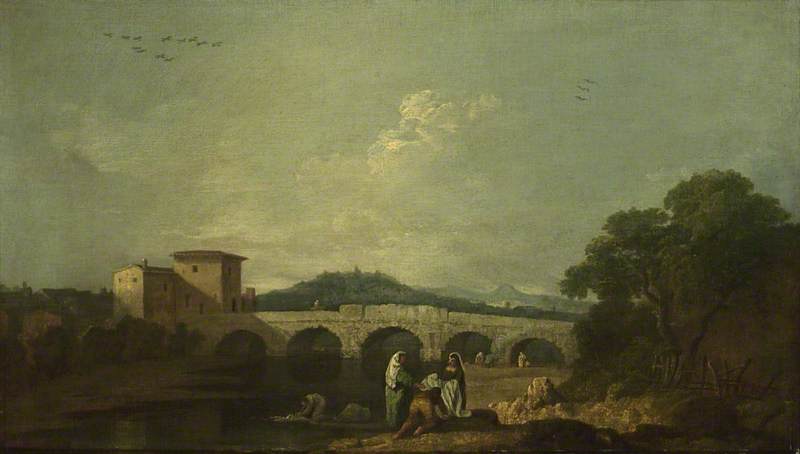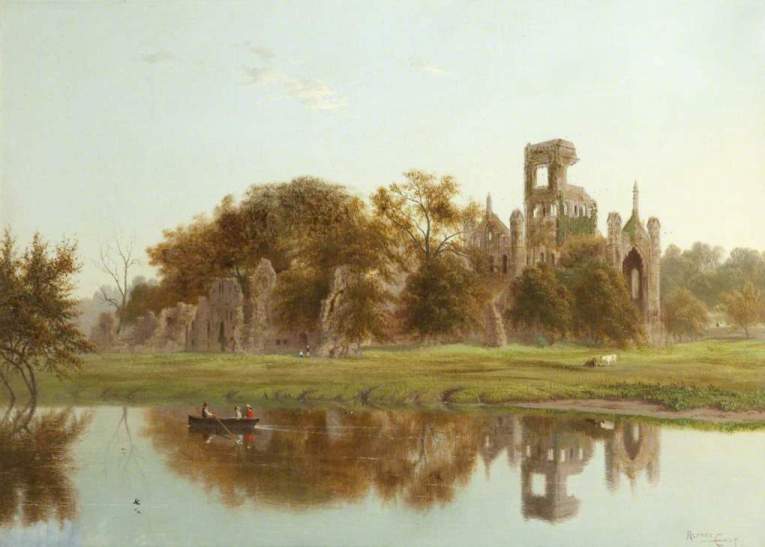Richard Wilson (1713-1782) produced a mix of portraits and landscape scenes early in his career, and the landscapes were realistic depictions his surroundings. His travels to Italy coincided with a full emphasis on landscapes and a shift in their subject: in addition to actual scenes with place names, there were increasing numbers of idealized "classical landscapes", perhaps inspired by the lore and legend of the Italian countryside. Even those works which have a grounding in showing a single identifiable locations are somewhat sentimental; he did not include any contemporary or monumental architecture. Misty ruins were more of an inspiration.
Friday, April 28, 2017
Friday, April 7, 2017
John Brett Paintings in GeoCodedArt
John Brett (1830-1902) paintings often feature a very colorful and wide open horizon. The earth itself seems alive somehow, with uneven but not particularly dramatic terrain. But maybe the west of England is just like that.
It is not uncommon that the signal feature which gives the work its name is barely discernible: the great wide, and seemingly wild, world, is of greater interest.
 |
A View Of Whitby From The Moors
by John Brett
|
Thursday, April 6, 2017
Francis Danby Paintings in GeoCodedArt
Francis Danby (1793-1861) paintings in the UK were of the west much more than southeast, and his views were always country-based: though there may be a recognizable feature of a city in the distance, life in the city is never what he captured. His subject matter, in its viewpoint, is more a constant in his work than the style of the work or typical coloring. More than many landscape artists, he appears to have adapted his style to the location. This carries over to his work on continental scenes, which he did more of than many British artists.
 |
View of Clifton from Leigh Woods
by Francis Danby
|
Wednesday, April 5, 2017
Patrick Nasmyth Paintings Geocoded
Patrick Nasmyth (1787–1831) paintings might be better termed "treescsapes" than landscapes. Even his paintings which have a landmark, and/or have a title that indicates the location of the view (a very large number are simply titled "Landscape"), the primary visual interest is in the foliage. Minutely detailed trees frame the view and generally obscure the horizon. Their backdrop are often dramatically lit clouds which are similar to the trees in their irregular shape and curvature, but are a bland shadow compared to the complex wonder that are the living things: stately yet dynamic; seemingly solid yet growing.
 |
A
view of the Douglas Bridge near Inverary, Argyllshire
By
Patrick Nasmyth |
Monday, April 3, 2017
Alfred East Paintings Geocoded
Alfred East (1849–1913) partings have a muted hazy quality, without bright sunshine nor vivid colors nor deep shadows. The title of many of his works are not specific about their location; and in many of the works in which a place name is in the title, the image could in fact be any of a number of places. But for the artist there was something about the feel of the place that could be matched to its name.
Only a handful of his works have a structure or landmark that would unlikely identify the location, and these works do not make that feature the focus of the piece; in all cases the atmosphere or feel of the place is the focus (though generally out of focus).
Only a handful of his works have a structure or landmark that would unlikely identify the location, and these works do not make that feature the focus of the piece; in all cases the atmosphere or feel of the place is the focus (though generally out of focus).
Subscribe to:
Posts (Atom)

